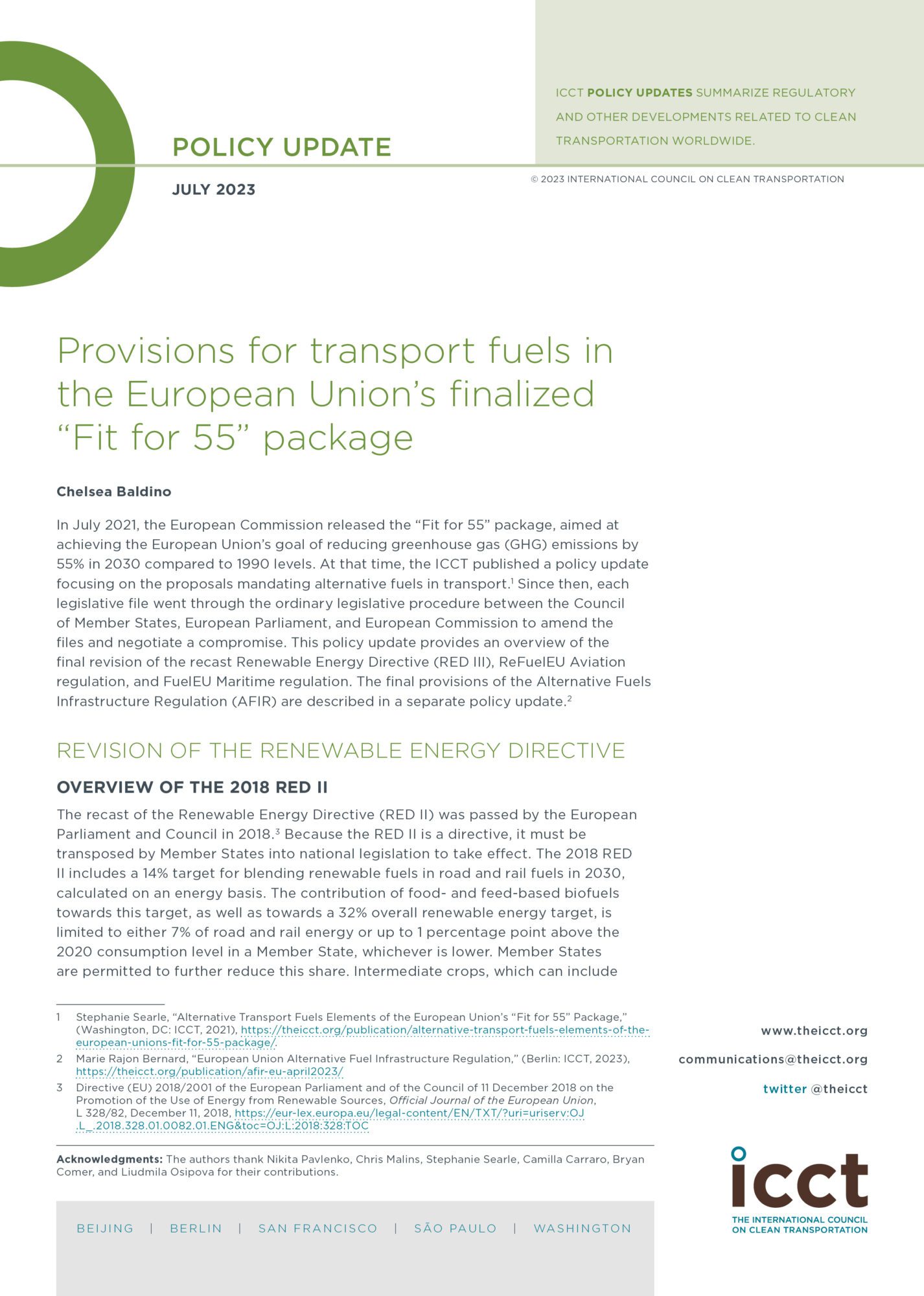Blog
The proposed CO2 standards for trucks and buses don’t align with Europe’s climate goals. Parliament can get them back on track (or completely derail them)
The European Commission set the legally binding target to achieve climate neutrality by 2050. To get there, they intend to reduce CO2 emissions across the entire transport sector by 90% by 2050, relative to 1990. By our analysis, Europe’s current CO2 standards for trucks trim emissions from the heavy-duty sector by about 2% below 1990 levels. So there’s a lot more to do.
In February 2023, the European Commission got out its bureaucratic hammer and chisel and chipped away at the original standards before it unveiled a proposal for an improved version (see here and here for our summary). They increased emission reduction targets, added new vehicle types like buses and trailers, and changed some compliance flexibilities for manufacturers.
But these proposed changes still aren’t not enough to hit that crucial 90% target; our latest projections show a 69% reduction in heavy-duty sector emissions by 2050 relative to 1990. While what the Commission has proposed is ambitious, there’s still a path to get to 90%.
When the European Commission unveiled its proposal, it sent it over to the European Parliament and the Council of the European Union to add their own changes. This process is now well underway, so let’s focus on Parliament.
The European Parliament has several different committees that take charge of specific issues. For example, the environment committee (known as ENVI) is in charge of proposing changes to the CO2 standards for trucks and buses. Every party elects a Member of the European Parliament (MEP) (known as a shadow rapporteur) to lead the development of their own proposals. Table 1 shows proposed changes to CO2 emission reduction targets for trucks from each party’s shadow rapporteur.
| Political party | 2025 | 2030 | 2035 | 2040 |
|---|---|---|---|---|
| Current standards | 15% | 30% | 30% | 30% |
| EC proposal | 15% | 43% | 64% | 90% |
| Greens | 15% | 64% | 95% | 100% |
| The Left | 15% | 64% | 95% | 100% |
| S&D | 15% | 59% | 79% | 100% |
| Renew | 15% | 49% | 70% | 95% |
| EPP | 15% | 43% | 64% | 90% |
| ID | 15% | 30% | 50% | 70% |
| ECR | 15% | 30% | 50% | 70% |
But it’s not only targets they considered; they introduced hundreds of amendments, for example, on what vehicles are covered, changes in compliance flexibilities, and the role of alternative fuels. We’ve spent some time these past few months to ready our model, Roadmap, to measure the emissions impact of these amendments by modelling the framework proposed by the European Commission’s proposal. We then examined all the shadow rapporteur proposals, ran them through our model, and determined how they would impact heavy-duty emissions. You can cycle through the different parties below.
Amendments that reduce emissions
Proposals by The Greens, The Left, and S&D would reduce emissions in the heavy-duty sector by nearly enough to approach the 90% mark. This is thanks to increased targets (shown in Table 1) and to the extension of standards to cover vocational vehicles (i.e., not-for-delivery vehicles, like construction and refuse collection vehicles). While vocational vehicles were excluded from the Commission’s original proposal, they’re the only non-regulated vehicle type that already reports their emissions. That means they’re well positioned to be included in the standards.
Renew’s proposal roughly aligns with the most ambitious targets considered by the Impact Assessment accompanying the European Commission’s proposal, but it would only reduce emissions by 77%, short of the 90% target. Renew also wants to include vocational vehicles, although with slightly lower targets than the other parties.
Amendments that increase emissionS
Proposals by ECR and ID would allow much more emissions than the Commission’s proposal; a proposed 69% reduction in 2050 drops to only 24%. But let’s focus on the biggest party in Parliament, the European People’s Party (EPP). The EPP doesn’t look to change targets for trucks (although they do want to reduce the target for trailers). Instead, together with the ECR and ID parties, it seeks to include a contentious new flexibility called the Carbon Correction Factor (CCF).
The European Commission has gone to great effort to keep fuels policies and vehicle policies separate. Fuel suppliers need to reduce the greenhouse gas emission intensity of their fuels due to fuels policies like the Renewable Energy Directive (RED); vehicle manufacturers need to lower CO2 emissions from their vehicles due to vehicle policies like these CO2 standards. But the CCF would mix the two. It would reduce the emissions of every diesel and natural gas vehicle by the share of so-called CO2 neutral diesel (e.g., biodiesel) or renewable methane, respectively, in the total European road sector. Consider the following example to understand why this reduction could be considered to be artificial.
Imagine you’re a manufacturer producing a diesel truck with emissions of 770 gCO2/km (the average for the most common truck type in Europe). Since the share of CO2 neutral diesel in Europe’s fuel mix is at 7.5% today, under the CCF you could report your truck to have emissions of 710 gCO2/km – that is 7.5% less than its 770 gCO2/km – to comply with your CO2 targets. When that truck’s on the road, it’s still going to emit 770 gCO2 every kilometer it drives.
The share of alternative diesel and natural gas is going to increase regardless of the CCF, thanks to the RED III and the ReFuelEU Aviation package, so including the CCF won’t do much more than reduce the effectiveness of the standards and mix two policy streams which have always been kept separate. We project an increase in emissions of 200 million tonnes if the CCF is included, and a reduction in the sale of zero-emission trucks and buses by 1.3 million vehicles through 2050. Notably, in the public consultation for these CO2 standards, nearly every major manufacturer expressed disapproval of introducing the CCF (IVECO, which has the highest emissions of any EU manufacturer, was the exception).
What happens next
The ENVI committee will vote on these proposals on October 23. A proposal would then move into plenary for a vote around the end of November. The original purpose of the European Commission’s changes to these standards was to align the heavy-duty sector with EU’s goal of climate neutrality. Our modeling brings evidence to the table – some proposed changes put us on track, others risk derailing Europe’s climate goals. It’s now for the Parliament to decide which path we take from here.
Author
Related Publications

PROVISIONS FOR TRANSPORT FUELS IN THE EUROPEAN UNION’S FINALIZED “FIT FOR 55” PACKAGE
Provides an overview of the final revision of the recast Renewable Energy Directive, ReFuelEU Aviation regulation, and FuelEU Maritime regulation.

